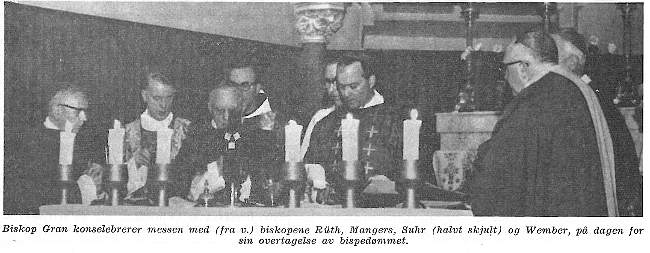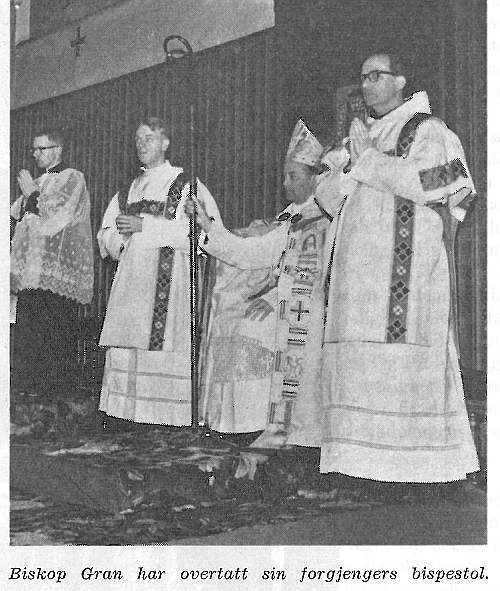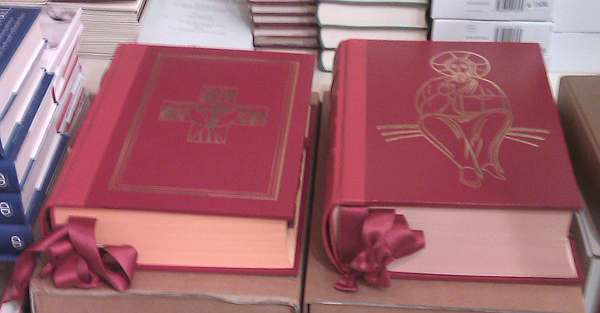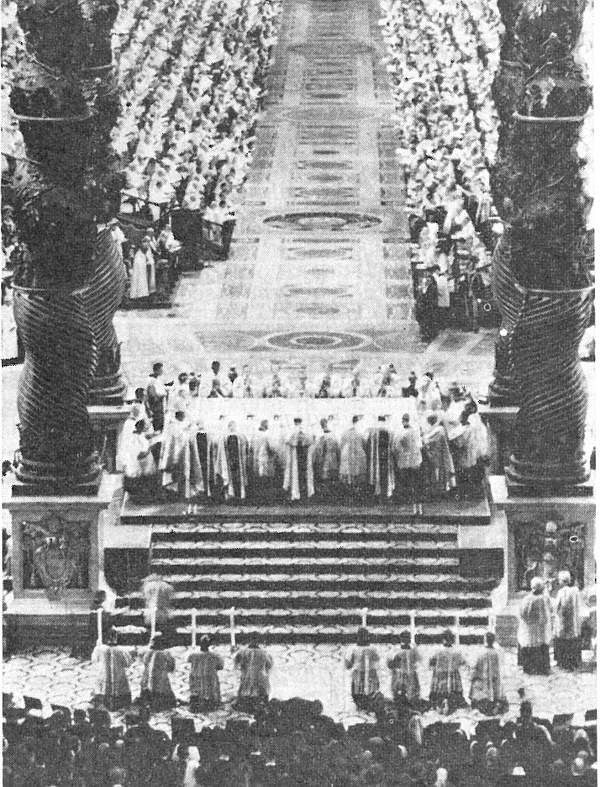St Olav trykket i sitt første nummer av 1965 følgende artikkel, som omtalte at biskop Gran overtok Oslo katolske bispestol noen uker før; 14. desember 1964. De to bildene viser liturgisk både det nye og det mer tradisjonelle: Dette var den aller første koncelebrasjonen i St Olav domkirke, og det var allerede satt et bord foran det gamle høyalteret (som stod fram til 1976) – men på bilde nr 2 ser vi den nye biskopen på sin cathedra, med to prester kledd i dalmatikaer ved siden av seg. Her er hele teksten fra St. Olav ved denne anledning:

EN MILEPEL OG ET PROGRAM
BISKOP JOHN WILLEM GRAN OVERTAR OSLO KATOLSKE BISPESTOL
Bispeskiftet i Oslo katolske bispedømme markerte på mange måter en milepel, uttalelser., omtaler i avisene osv. har understreket denne side av begivenheten. En ung nordmann ble formelt innsatt i embedet, sammen med fire andre av Kirkens biskoper konselebrerte han for første gang messen i St. Olavskirken i Oslo, for første gang ble en del av de nye liturgiske bestemmelser tatt i bruk.
Men det skjedde jo en annen, viktig ting under høytideligheten også. Den nye biskop, John W. Gran skisserte i sin tale ganske enkelt et program for den fullsatte kirke., for prestene, søstrene, gamle og unge legfolk. Det må vel oppfattes som noe av hans arbeidsprogram i tiden som kommer – det var ikke en vanlig takk-for-tilliten tale eller en hilsen til den flokk trofaste, men passive – men idéer helt og fullt basert på verdenskirkens ajourføring, fylt av ny aktivitet, nye tanker og forslag om øket samarbeide. Dessuten er de en rettesnor for katolikkers forhold til medkristne og ikke-kristne i dette land.
 Og derfor er biskop Grans tale så viktig at «St. Olav», forsinket av julehelg og hoppende trykningstider, velger nettopp denne tale som «et dokument» fra det som skjedde den 13. desember, på tredje søndag i advent.
Og derfor er biskop Grans tale så viktig at «St. Olav», forsinket av julehelg og hoppende trykningstider, velger nettopp denne tale som «et dokument» fra det som skjedde den 13. desember, på tredje søndag i advent.
Biskop Gran sa bl.a.: Det er naturlig at man ved en slik milepel først ser tilbake. Kjære biskop Mangers, for 32 år siden, i omtrent samme alder som jeg har nå, kom De til Deres gjerning her. Ung, forhåpningsfull og energisk og uten rynker. De er i dag fremdeles ung av sinn, forhåpningsfull og energisk, de rynkene De har fått forteller oss om ansvaret og byrden.
De har, kjære biskop Mangers, kommet som den gode far og som en fredselsker, De har alltid vist pietetsfølelse overfor den norske tradisjon og Deres tid har vært en ekspansjons- og oppbygningstid.
De har alltid tatt konsekvensen av Deres egen overbevisning om hva som var til det beste. Og De omfattes med en dyp og virkelig kjærlighet fordi De er den De er, den gode hyrde.
Og nå er jeg fylt med en slags uro over kanskje a skulle svikte et stort oppdrag, uro, men også glede. Kirken er kommet til en milepel, Konsilet skal gi oss vårt program, og jeg ber om lojalitet overfor alt det nye som følger med Kirkens store oppbrudd.
Noen katolikker føler angst i dette oppbruddet, været er stormfullt. Prester og legmenn må arbeide for å forvandle denne angst i sinnene til forhåpningsfull optimisme.
…
Biskop Gran overtar Oslo katolske bispedømmeLes mer »



 Og derfor er biskop Grans tale så viktig at «St. Olav», forsinket av julehelg og hoppende trykningstider, velger nettopp denne tale som «et dokument» fra det som skjedde den 13. desember, på tredje søndag i advent.
Og derfor er biskop Grans tale så viktig at «St. Olav», forsinket av julehelg og hoppende trykningstider, velger nettopp denne tale som «et dokument» fra det som skjedde den 13. desember, på tredje søndag i advent.